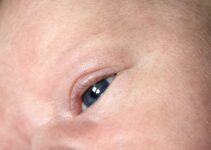
Baby gasping for air in sleep may sound alarming. Fortunately, in most cases, the cause is benign. The baby’s respiratory system is not fully matured, and thus some of the babies might struggle a bit with breathing, especially during sleep.
It is pretty common for babies to have irregular breathing. Nonetheless, there is a need for monitoring such a child to exclude more severe causes.
Babies sleep for longer hours than adults. They also frequently sleep after a meal. In many cases, this gasping for air may be caused due to gastroesophageal reflux (GER). In most babies, it is a short-lived phenomenon.
Could there be more severe causes for baby gasping for air in sleep?
One of the most common and severe forms of sleeping disorder present in some of the babies could be sleep apnea.
To date, there is limited understanding of the prevalence of sleep apnea in babies. Nevertheless, most data seem to indicate that its prevalence could be 1 to 6%, with most cases of obstructive sleep apnea (OSA)1.
OSA is also quite common in adults. However, its diagnosis is more challenging in babies. It is because signs and symptoms of OSA differ a lot from adults in babies. Quite often, doctors would prefer to use the term pediatric sleep-disordered breathing (SDB) until or unless some specific diagnosis is confirmed [1].
Understanding sleep apnea in babies
 Sleep apnea is quite challenging to diagnose in babies due to the high variance in signs and symptoms. The parents also tend to describe the issues in various ways like child stops breathing for a while, baby gasps for breath, breathing pauses, irregular breathing while asleep, and much more [1].
Sleep apnea is quite challenging to diagnose in babies due to the high variance in signs and symptoms. The parents also tend to describe the issues in various ways like child stops breathing for a while, baby gasps for breath, breathing pauses, irregular breathing while asleep, and much more [1].
There are two known types of sleep apnea causing a baby to gasp for air: obstructive sleep apnea (OSA) or central sleep apnea (CSA). OSA is perhaps the cause of gasping for air in most cases, as CSA is quite rare.
In OSA, the respiratory tract becomes partially blocked due to anatomical issues, changes, pathologies, causing airway obstruction while sleeping. On the other hand, in CSA brain simply fails to fire signals regularly; thus, baby fails to breathe regularly.
Some of the common signs of OSA
OSA is challenging to diagnose in a way that young babies cannot communicate effectively. One of the earliest signs that caregivers might notice is “Baby gasping for air in sleep.”
Other common signs and symptoms are [2]:
- Frequent cessation of breathing for a short period. There might be multiple such episodes, and the condition may keep repeating.
- Cyanosis or the baby turns bluish in color due to a deficiency of oxygen in the blood.
- Increased bedwetting.
- Excessive sleepiness, especially when a baby is expected to be quite active. It happens because OSA disturbs the refreshing effect of sleep.
- Irritability when awake, and crying for no apparent reasons, and even frequent colic.
- Frequent nighttime awakening, as OSA-related sudden disruption in breathing, may awaken the baby.
- Snoring, quite like in adults, should point to OSA.
- Changes in daytime behavior.
Physical examination may also help understand the underlying cause. Some of the conditions are more frequently associated with sleep disorders [2]:
- Craniofacial abnormalities
- Adeno-tonsillar hypertrophy
- Laryngeal pathology
- Lingual tonsils
Sleep disorders are more common among overweight babies. It is also worth knowing that unmanaged sleep disorders may lead to slow growth and cause certain life-threatening complications. Thus, early diagnosis is important.
Diagnosis of sleep disorders
Although recognizing various signs and symptoms may help. However, the only dependable way to confirm the diagnosis is with the help of a study in a sleep lab. Such a study is done with the help of special equipment that measures breathing, heartbeat, brain activity (equipment is called a polysomnogram, and the procedure is called polysomnography).
Usually, doctors may also recommend other diagnostic tests like chest x-ray, CT scans. Pulse oximetry may also help confirm the diagnosis in some cases. In children, oxygen saturation below 92 must be worrisome [2].
What could be a treatment of the condition?
Since there could be many reasons for baby gasping for air in sleep, treatment would also vary. Fortunately, most such issues are short-lived, and a child may outgrow them.
More severe cases of OSA may require the use of specific apparatus that may help a child breathe properly. Certain cases are also managed with the help of surgical corrections of the obstruction.
To conclude, sleep disorders among children are more common than imagined earlier. However, in most cases, there is not much to worry about. As babies grow pretty fast, they would quickly outgrow many of these problems. Nevertheless, in some cases, early diagnosis may be lifesaving.
References
- Lumeng JC, Chervin RD. Epidemiology of Pediatric Obstructive Sleep Apnea. Proc Am Thorac Soc. 2008;5(2):242-252. doi:10.1513/pats.200708-135MG
- Chan J, Edman JC, Koltai PJ. Obstructive Sleep Apnea in Children. AFP. 2004;69(5):1147-1154.




 Dr. Preet Pal SB is a physician (M.D. Medicine) with a specialization in diabetes (Fellowship in diabetes, Royal Liverpool Academy). He has a particular interest in metabolic disorders, considering that they are rising in every corner of the world, more so in India.
Dr. Preet Pal SB is a physician (M.D. Medicine) with a specialization in diabetes (Fellowship in diabetes, Royal Liverpool Academy). He has a particular interest in metabolic disorders, considering that they are rising in every corner of the world, more so in India.